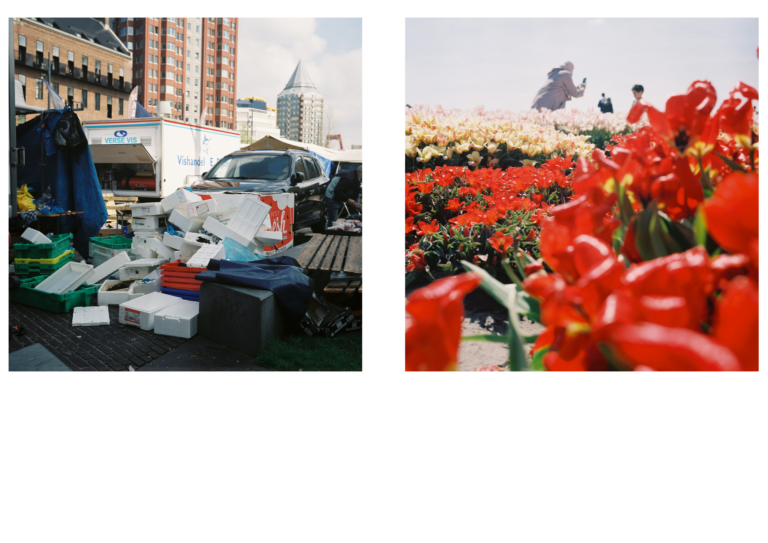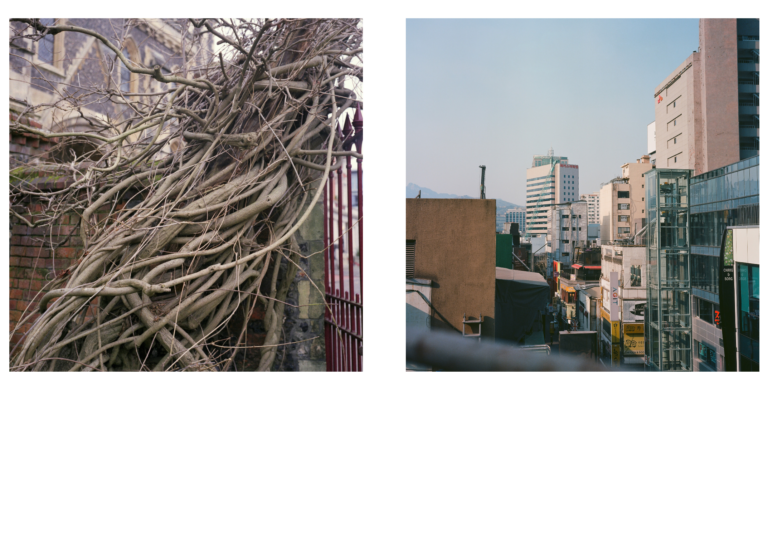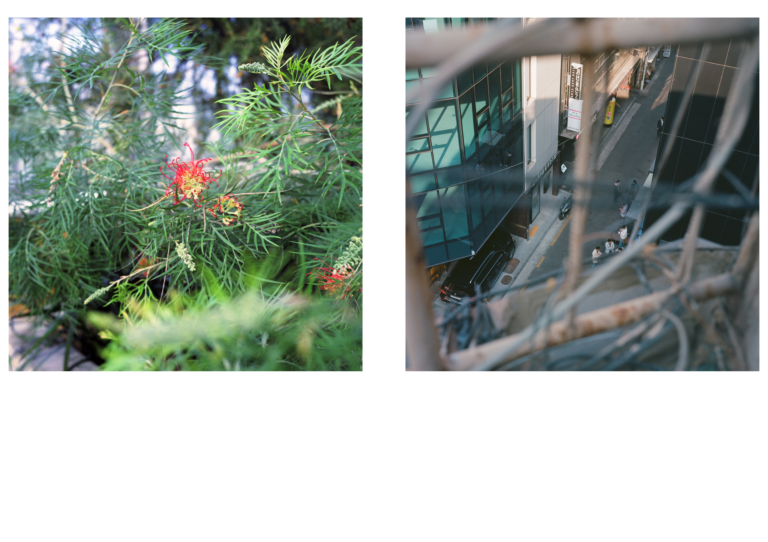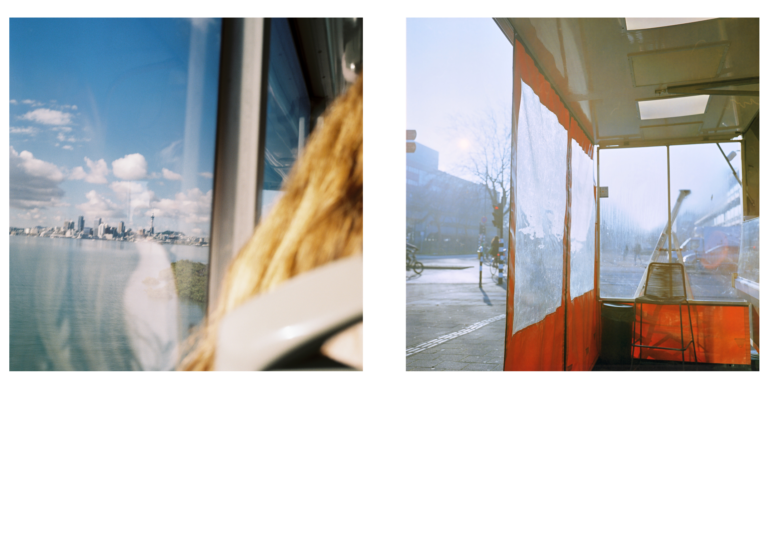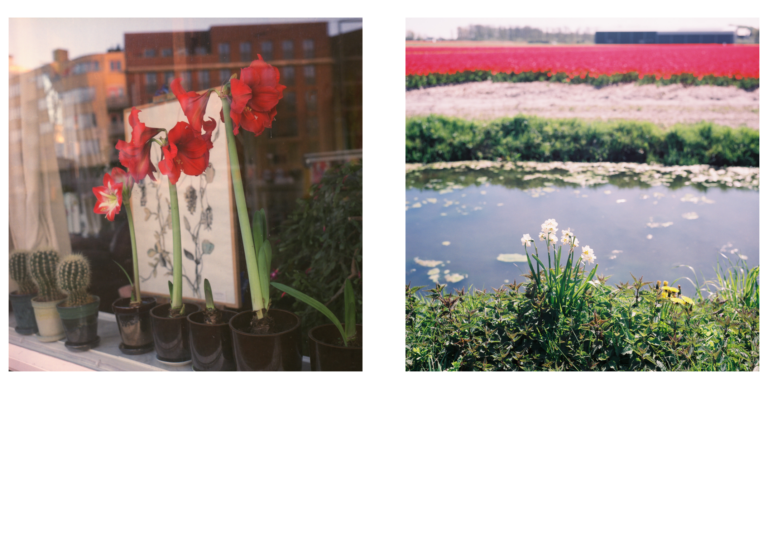[Counterintuitive]
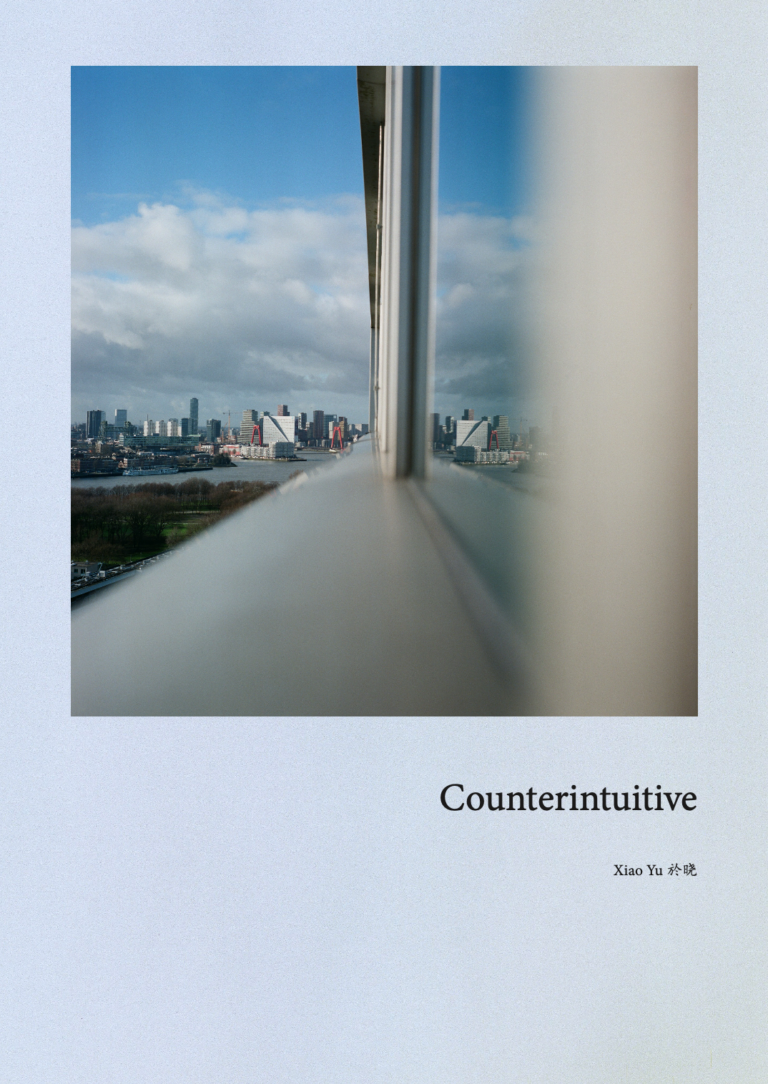
In this book, I present a collection of photographs taken between 2021 and 2023 in South and North Holland, Zeeland, England, Seoul, and various locations in New Zealand. The purpose of this visual journey is to explore the blurred boundaries between human constructs and nature.
During this quest, I was struck by the extent to which what we perceive as natural is actually the result of significant human intervention. For example, the pastoral image of cows grazing on green pastures beside traditional barns that we frequently encounter on meat packaging is far removed from the reality of modern Dutch cattle farms. These farms are now equipped with robots and automated systems for large-scale livestock management, and the remaining farm-like buildings are often repurposed into restaurants and event venues (Bedir et al., 2023).
The counterintuitiveness of nature being enabled by enormous efforts based on human idealisations also lies in the very existence of gardens. In city gardens, flower seedlings are pre-cultivated in horticulture greenhouses and brought into the site when they are ready to bloom. After my own practice of growing vegetables in the allotment garden, I realised that the vast majority of my gardening tasks are dedicated to preventing nature from growing plants (such as nettles and horsetails) and preventing slugs, mice, or birds from eating away my pre-mature crops. If it is up for strict scrutiny, gardens are exactly the products of human constructs against nature. Even for large conservation projects in which landscapes are protected from human activities, the very definition of what makes an ecosystem pristine is the end result of human idealisations and a series of ecological design choices (Marris, 2013).
Despite the human dominance of our constructed world, nature continues to make its presence felt. Even in the most urbanised of spaces, traces of nature abound: lights, wind, weeds sprouting from a crack in the pavement, house plants sitting on windowsills, and cherry blossoms falling onto the motor road. In fact, our human eyes are so used to seeing natural elements in a city that we almost no longer notice them.
The photographs in this book are an attempt to show this intricate interplay between the human-made and the natural. With an approach that tries to capture the in-betweenness among landscapes and artefacts, I hope these images could provoke visceral reactions and reflections of “false connections”. Or, perhaps we should come to the conclusion that the connections are not false after all.
References:
Bedir, M., Groen, L., Kuijpers, M., Sanz, V. M., & Verzier, M. O. (Eds.). (2023). Automated landscapes. Nieuwe Instituut. https://automated-landscapes.hetnieuweinstituut.nl/en/publication-automated-land- scapes
Marris, E. (2013). Rambunctious garden: saving nature in a post-wild world. Bloomsbury Publishing.
Excerpts from the book:
